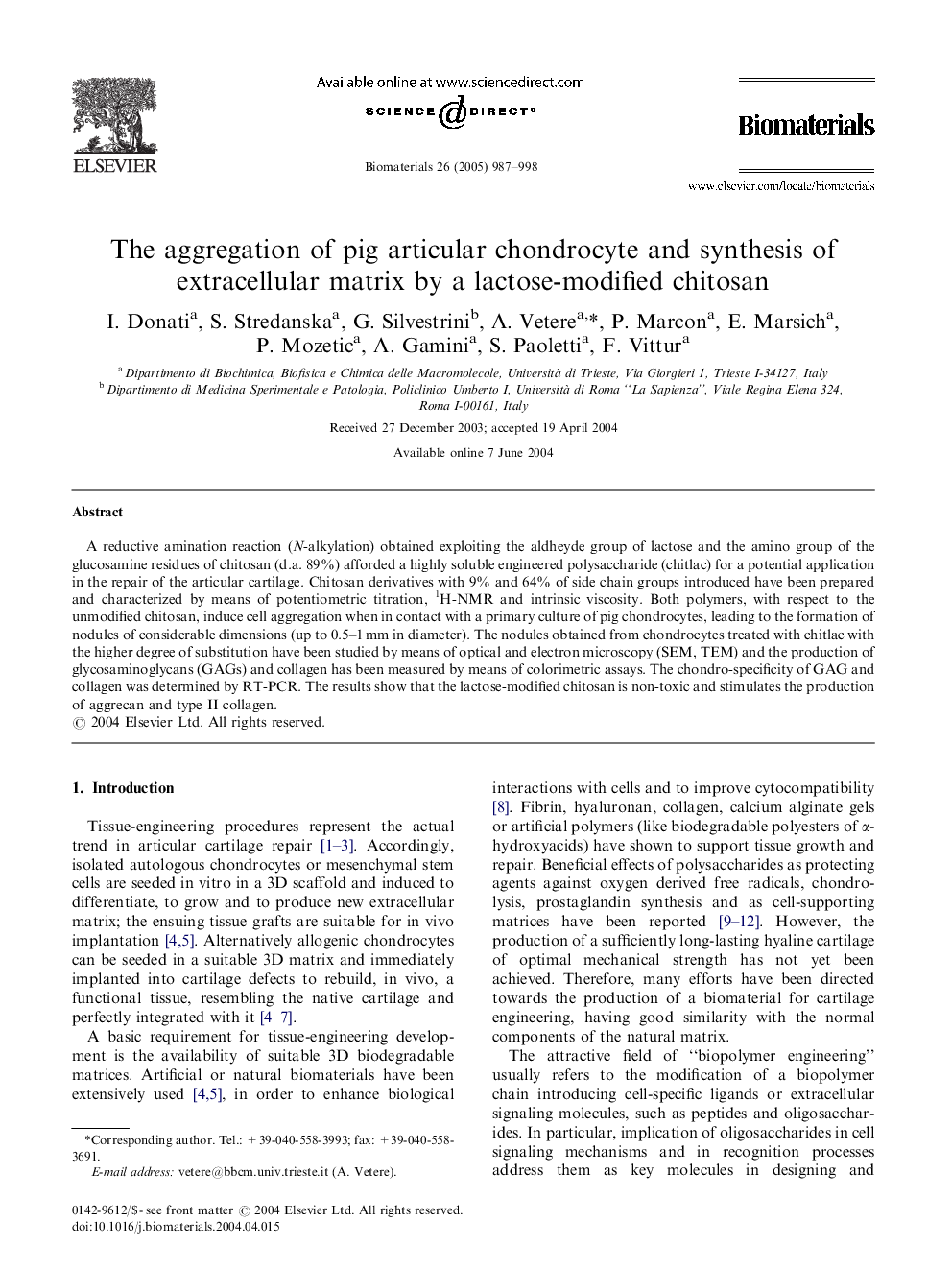| Article ID | Journal | Published Year | Pages | File Type |
|---|---|---|---|---|
| 10230112 | Biomaterials | 2005 | 12 Pages |
Abstract
A reductive amination reaction (N-alkylation) obtained exploiting the aldheyde group of lactose and the amino group of the glucosamine residues of chitosan (d.a. 89%) afforded a highly soluble engineered polysaccharide (chitlac) for a potential application in the repair of the articular cartilage. Chitosan derivatives with 9% and 64% of side chain groups introduced have been prepared and characterized by means of potentiometric titration, 1H-NMR and intrinsic viscosity. Both polymers, with respect to the unmodified chitosan, induce cell aggregation when in contact with a primary culture of pig chondrocytes, leading to the formation of nodules of considerable dimensions (up to 0.5-1Â mm in diameter). The nodules obtained from chondrocytes treated with chitlac with the higher degree of substitution have been studied by means of optical and electron microscopy (SEM, TEM) and the production of glycosaminoglycans (GAGs) and collagen has been measured by means of colorimetric assays. The chondro-specificity of GAG and collagen was determined by RT-PCR. The results show that the lactose-modified chitosan is non-toxic and stimulates the production of aggrecan and type II collagen.
Related Topics
Physical Sciences and Engineering
Chemical Engineering
Bioengineering
Authors
I. Donati, S. Stredanska, G. Silvestrini, A. Vetere, P. Marcon, E. Marsich, P. Mozetic, A. Gamini, S. Paoletti, F. Vittur,
